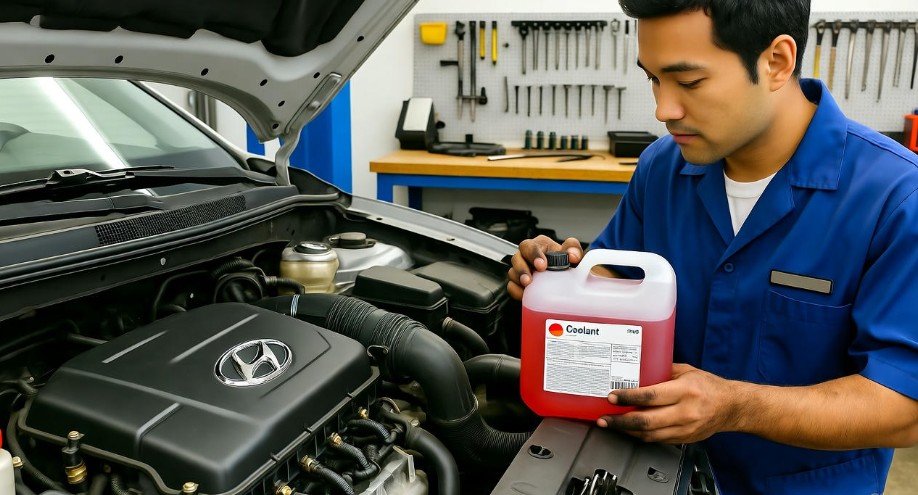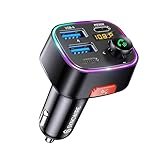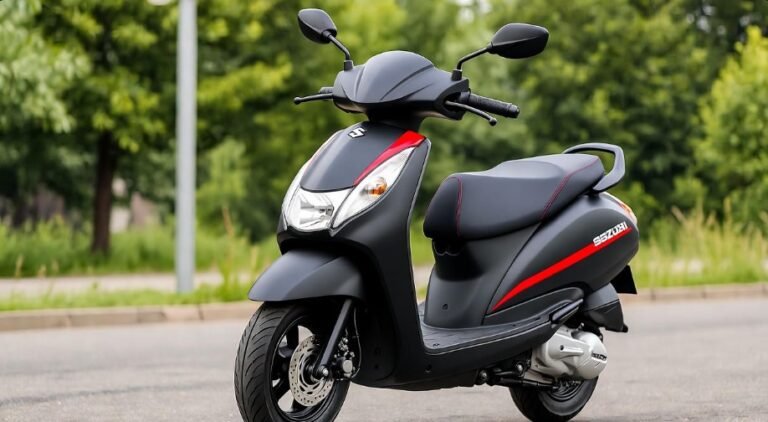What Color Coolant Does Hyundai Use: Decoding the Ideal Antifreeze

When it comes to maintaining your Hyundai, one of the most overlooked yet crucial components is the coolant. Often underestimated, the coolant is the unsung hero of your car’s engine, ensuring it runs smoothly, stays cool under pressure, and avoids costly damage. If you’ve ever wondered, “what color coolant does Hyundai use?”, the answer might seem simple, but understanding it fully can save you from expensive mistakes. Hyundai vehicles are designed to work best with blue coolant, which is specifically formulated to meet the unique requirements of their engines. Using the right coolant is not just about following manufacturer guidelines—it’s about preserving your engine’s health and performance for years to come.
In this guide, we’ll break down why Hyundai recommends a specific coolant color, what makes the blue coolant unique, and how it affects the overall efficiency of your vehicle. We’ll also explore practical tips for choosing and maintaining the right antifreeze, with insights drawn from real-world automotive experience.
Why Choosing the Right Coolant Matters
You might be tempted to grab any antifreeze from the local auto parts store, but doing so could jeopardize your engine’s longevity. Coolant does more than prevent your engine from overheating—it protects your radiator, engine block, and water pump from corrosion and scale buildup. Hyundai engines, in particular, are sensitive to chemical compositions in antifreeze. Using the wrong coolant, or mixing different colors, can lead to clogged passages, rust formation, and even engine failure.
The blue coolant used in Hyundai vehicles is specially engineered to resist oxidation, maintain optimal temperature ranges, and provide long-lasting protection. This coolant is often referred to as Genuine Hyundai Long Life Coolant, and it comes with additives that prevent corrosion in aluminum engine parts—a feature crucial for modern Hyundai engines that often include lightweight aluminum components. By sticking to the recommended blue coolant, you’re effectively safeguarding the car’s cooling system and ensuring smooth, trouble-free performance over the long term.
Understanding Hyundai’s Coolant Color Code
One of the simplest ways to identify the right coolant is through its color coding. Hyundai’s blue coolant stands out because it is specifically formulated to meet the chemical requirements of Hyundai engines. While some Hyundai models may also use green coolant in certain climates or older models, the blue coolant remains the standard recommendation across most modern Hyundai vehicles.
Here’s why the color is more than just aesthetic:
-
Chemical Composition: Blue coolant contains specific inhibitors that prevent rust, corrosion, and scale buildup in the cooling system.
-
Temperature Stability: It maintains performance across a wide range of temperatures, ensuring your engine doesn’t overheat in summer or freeze in winter.
-
Long-Life Protection: Hyundai’s blue coolant is designed to last longer than generic alternatives, reducing the frequency of coolant changes.
By understanding the color code, you’re not just picking a color—you’re choosing a formula designed to protect your investment and keep your car running efficiently.
How Blue Coolant Protects Your Hyundai Engine
Think of the coolant as the bloodstream of your engine. Just like blood delivers nutrients and removes waste, coolant carries heat away from the engine and maintains a balanced operating temperature. Using Hyundai’s recommended blue coolant ensures that this “engine bloodstream” works optimally.
Some of the key benefits include:
-
Corrosion Prevention: Aluminum and metal components in the engine are protected from rust and chemical damage.
-
Optimal Heat Transfer: The engine stays within a safe temperature range, preventing overheating that could warp engine components.
-
Freeze Protection: In cold climates, the coolant prevents water in the system from freezing, avoiding cracked engine blocks.
-
Compatibility: The blue coolant is fully compatible with Hyundai gaskets, hoses, and other cooling system parts, reducing the risk of leaks or damage.
Using the wrong coolant color or mixing incompatible antifreezes can compromise all these protections, potentially leading to expensive repairs.
Choosing the Ideal Antifreeze for Your Hyundai
Now that you know Hyundai primarily uses blue coolant, the next step is understanding how to select the right antifreeze for your specific model. While there are countless aftermarket coolants available, sticking to Genuine Hyundai Coolant ensures compatibility and preserves your warranty.
Here are some practical tips to keep in mind:
-
Check the Owner’s Manual: Always confirm the recommended coolant type for your specific Hyundai model.
-
Avoid Mixing Colors: Mixing blue with green or other aftermarket antifreezes can cause chemical reactions that reduce cooling efficiency.
-
Use the Right Concentration: Typically, a 50/50 mix of coolant and distilled water is recommended unless otherwise specified.
-
Replace at Recommended Intervals: Hyundai recommends replacing the coolant every 60,000 miles or 5 years, whichever comes first.
By following these simple yet effective guidelines, you can ensure your vehicle remains in peak operating condition, avoids unexpected breakdowns, and extends the life of its engine.
Signs You Might Need to Change Your Coolant
Even the best coolant degrades over time. Recognizing when your Hyundai’s coolant needs attention can prevent serious damage. Common warning signs include:
-
Overheating Engine: If your temperature gauge is frequently high, it may indicate deteriorated coolant.
-
Discolored Coolant: Blue coolant turning brown or rusty signals contamination.
-
Leaks: Puddles under your car may indicate a failing cooling system.
-
Unusual Smells: A sweet, syrupy smell could mean coolant is leaking onto hot engine components.
Paying attention to these indicators allows you to take proactive action before minor issues become costly repairs.
Sample Table: Coolant Color Comparison
| Coolant Color | Hyundai Use | Key Feature | Longevity |
|---|---|---|---|
| Blue | Standard for most modern Hyundai vehicles | Prevents corrosion, ensures optimal heat transfer | Long Life (up to 5 years) |
| Green | Older or specific models | Basic anti-freeze and rust protection | Moderate (2-3 years) |
| Orange/Red | Not recommended for Hyundai | Used in other brands | N/A |
This table highlights why blue coolant is the preferred choice for Hyundai, emphasizing its benefits and long-lasting protection.
How to Properly Maintain Your Hyundai’s Coolant
Maintaining your Hyundai’s blue coolant isn’t complicated, but it does require attention to detail. Think of it like caring for a delicate ecosystem—the right balance keeps everything running smoothly. Regular maintenance ensures that your cooling system stays free from rust, sludge, and overheating issues. Start by checking your coolant level every few weeks, especially before long trips. Make sure the coolant reservoir is filled between the “MIN” and “MAX” marks, and only top it up with the recommended Hyundai blue coolant.
It’s also important to inspect hoses, clamps, and the radiator for any leaks or cracks. Even minor leaks can lead to a loss of coolant, which may cause your engine to overheat unexpectedly. Additionally, flushing the cooling system periodically—usually every 60,000 miles—removes old contaminants and ensures your engine stays protected. By following these simple steps, you’re not only preserving the integrity of the cooling system but also extending the life of your Hyundai’s engine, preventing costly repairs down the line.
DIY Coolant Replacement: Step-by-Step Guide
Replacing your Hyundai’s coolant doesn’t have to be intimidating, and doing it yourself can save money while giving you a deeper understanding of your vehicle. Here’s a simple, step-by-step guide to safely replace your blue coolant:
-
Cool the Engine: Never open the radiator cap when the engine is hot. Wait until the engine is completely cooled.
-
Drain Old Coolant: Place a drain pan under the radiator, open the drain valve, and allow the old coolant to fully drain.
-
Flush the System: For best results, flush the system with distilled water to remove any sediment or rust.
-
Refill with Blue Coolant: Using a 50/50 mix of Genuine Hyundai Blue Coolant and distilled water, refill the radiator and reservoir.
-
Bleed the System: Air trapped in the cooling system can reduce efficiency. Run the engine with the heater on high until the thermostat opens and air bubbles escape.
-
Check Levels: After a short drive, let the engine cool and recheck coolant levels, topping up if necessary.
This DIY approach ensures that your cooling system is clean, fully functional, and protected with the correct Hyundai coolant. It’s a satisfying way to maintain your vehicle while gaining confidence in basic car care.
Common Myths About Coolant Colors
There’s a lot of misinformation floating around about coolant colors, and it’s important to separate fact from fiction. Many drivers assume that any coolant color—green, blue, or orange—is interchangeable, but this is not true for Hyundai vehicles.
Some myths include:
-
“All coolants are the same”: Incorrect. Hyundai’s blue coolant has specific additives for aluminum engines. Using another color may lead to corrosion.
-
“Mixing colors is safe”: Wrong. Mixing coolants can cause chemical reactions that form sludge, clogging your radiator.
-
“Coolant doesn’t need regular replacement”: Misleading. Even long-life coolants degrade over time and lose their protective properties.
Understanding these myths can save you from costly mistakes and ensures that your Hyundai’s cooling system operates at peak performance.
FAQs About Hyundai Coolant
1. What color coolant does Hyundai use?
Hyundai primarily uses blue coolant, designed to provide long-lasting protection against corrosion, overheating, and freezing. Some older models may use green, but blue is the standard for most modern vehicles.
2. Can I use green or orange coolant in a Hyundai?
It’s not recommended. Mixing colors or using incompatible antifreeze can damage the cooling system and reduce the effectiveness of corrosion inhibitors. Always stick to blue coolant.
3. How often should I replace Hyundai coolant?
Typically, Hyundai recommends changing coolant every 60,000 miles or 5 years, whichever comes first. Check your owner’s manual for your model’s specific schedule.
4. Can I top off my coolant with water?
In emergencies, distilled water is acceptable, but avoid tap water as it contains minerals that can cause corrosion. Always refill with the correct blue coolant for long-term protection.
5. What happens if I use the wrong coolant?
Using incompatible coolant can lead to corrosion, overheating, leaks, and even engine failure. It can also void your vehicle’s warranty.
6. How do I know if my coolant is low?
Check the coolant reservoir regularly. If the level is below the “MIN” mark, top it off with blue Hyundai coolant. Unusual engine temperature or puddles under the car can also indicate low coolant.
7. Is DIY coolant replacement safe?
Yes, with proper precautions. Ensure the engine is cool, follow safety steps, and use genuine Hyundai blue coolant. Bleeding the system properly is key to avoiding air pockets.
Practical Tips for Long-Lasting Cooling System Performance
Maintaining a healthy cooling system is all about routine checks and preventive care. Here are some practical tips:
-
Inspect the radiator, hoses, and clamps for leaks at least twice a year.
-
Avoid mixing coolant colors—stick to Genuine Hyundai Blue Coolant.
-
Keep an eye on the temperature gauge to catch early overheating signs.
-
Flush and replace coolant according to your owner’s manual schedule.
-
In extreme weather conditions, check for freeze protection or heat performance.
By incorporating these habits into your vehicle maintenance routine, your Hyundai can deliver reliable performance for years.
Conclusion: Keep Your Hyundai Cool and Protected
Understanding “what color coolant does Hyundai use” is more than just a technical detail—it’s a key step in preserving your engine’s longevity and performance. Using the blue coolant recommended by Hyundai ensures your engine stays protected against corrosion, overheating, and freezing. Regular maintenance, periodic flushing, and using the right antifreeze all contribute to a trouble-free driving experience.
Remember, your Hyundai’s cooling system is a delicate balance, and using the correct coolant is like giving your engine the right diet—it keeps it healthy, efficient, and strong. By following the tips in this guide and staying attentive to your vehicle’s needs, you’re not just maintaining a car—you’re investing in reliability and peace of mind for years to come.






